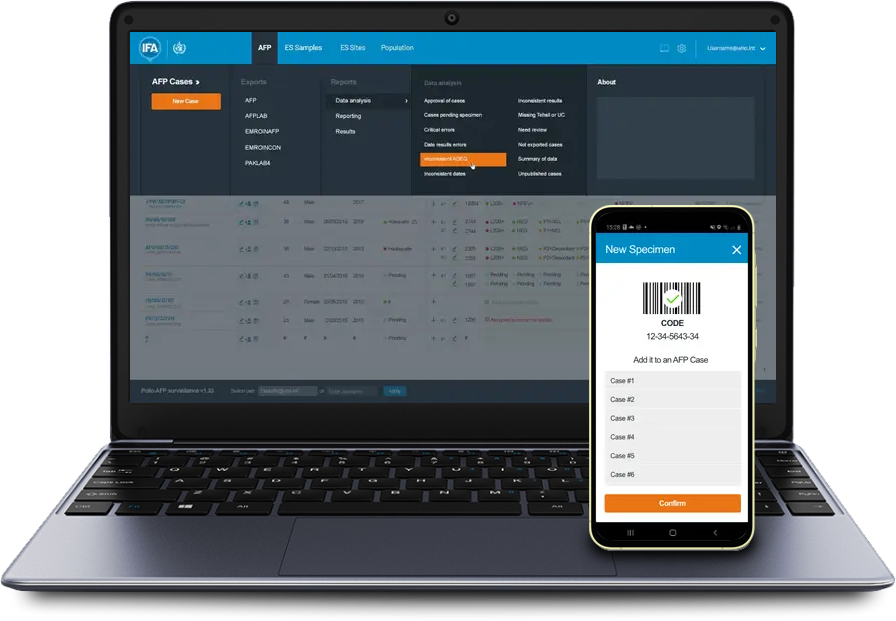Objectives
- Integrate polio surveillance components (AFP, ES, PID) into one platform
- Bring all actors involved in polio surveillance (surveillance officers, sample collectors and lab officers) onto one common platform
- Provide real-time visibility into polio surveillance data through a central repository
- Streamline data flow and reporting
- Reduce data management burden by eliminating data redundancy
- Improve data quality and data transparency
- Improve tracking and tracing with bar codes and georeferenced data collection
- Support online and offline data entry using smartphones, tablets and laptops
Description
The new web-based IFA (WebIFA) is a modernized, centralized platform which brings together the epidemiological data, specimens and environmental samples collected by surveillance officers in Pakistan and Afghanistan and the virological data produced by reference laboratories.
WebIFA contains all the historical data from its legacy predecessor and allows each participating country to have its own database and control over user access rights under a mutualized infrastructure. The security model allows different users to edit or view only the data they are responsible for at their level.
The platform features a progressive web application (PWA) working on smartphones, tablets and laptops allowing a user to edit data offline when required and seamlessly resynchronize with the server when connectivity allows. Field staff can georeference data collected in the field and use barcodes for data entry and unique identification of samples.
System administrators can modify data entry forms and underlying data models by simple configuration without the need for software developers.
400K
10K
200

Geographic deployment
WebIFA is used nationally and in production in the following EMRO countries:
- ES – Afghanistan, Pakistan, Oman, Jordan, Bahrain, Saudi Arabia, Kuwait, Iraq, Sudan, Egypt, Somalia, Lebanon, Djibouti, Syria
- AFP – Afghanistan, Pakistan, Iraq, Syria, Lebanon
Context
The World Health Organization (WHO) Country Office of Pakistan relied on a technology solution named IFA for reporting polio Acute Flaccid Paralysis (AFP), Contact cases, Environmental Surveillance (ES) samples and the associated laboratory results. IFA was made of a constellation of standalone applications installed on multiple personal computers. As a result, the data was exchanged between surveillance and lab officers as text files through the organization’s hierarchy to be aggregated at the national, regional and global levels.
The IFA underlining technology was created some 20 years ago and, although very successful, the surveillance platform needed to go through a complete technology upgrade.










